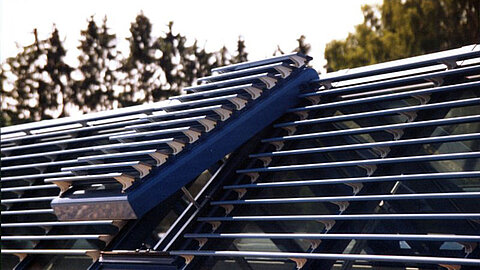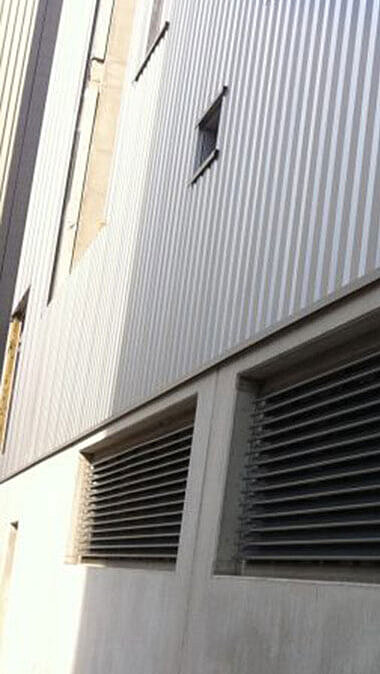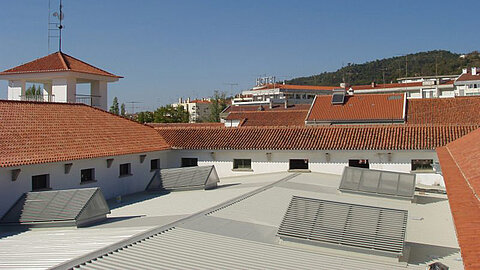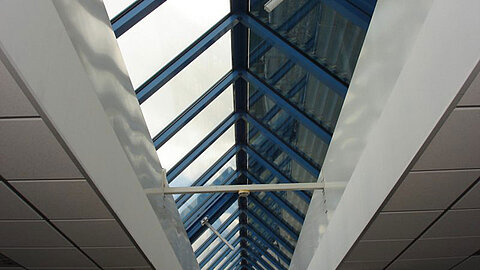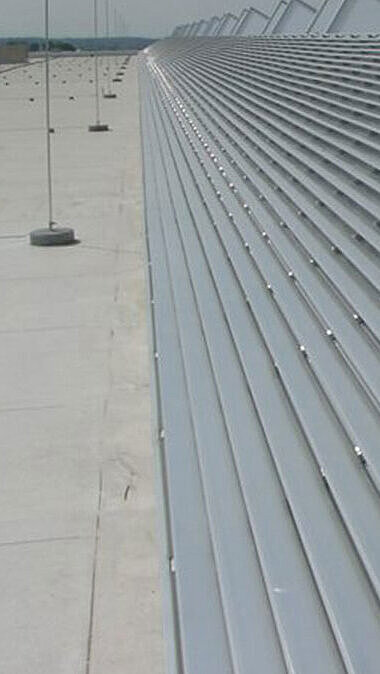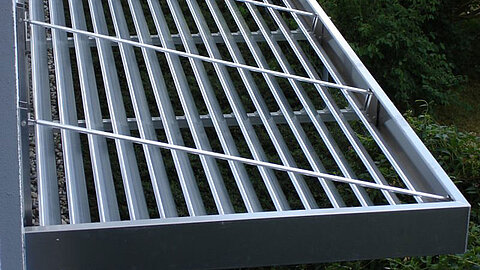Shade systems
Optimal sun protection for well-being and productivity
The tasks of shade systems range from classic sun protection to the lighting of interiors, burglary and privacy protection to thermal insulation. Especially in the summer months, unshaded rooms heat up unpleasantly. In addition, too much sunlight leads to glare in the interior, the UV radiation shining in can fade furniture as well as textiles and the indoor climate suffers from the heat and bad air.
But especially a pleasant temperature in the workplace is essential for the well-being and productivity of the people who are in the building. The shading of workplaces is even regulated by law. The Technical Rules for Workplaces (ASR) provide guidelines for setting up and operating workplaces. In the course of this, maximum working temperatures that may prevail at a workplace are determined and guidelines for sufficient shading are set. These guidelines are particularly important for building planners and architects who are planning the new construction or renovation of workplaces.
The workplace temperature should not exceed 26 °C. According to studies, even every degree Celsius above 20 °C leads to reduced productivity. Because the heat output from direct solar radiation on light surfaces can be up to 900 W/m² in summer, sun protection is given a particularly high priority.
Shade systems can significantly regulate the temperature and are therefore mandatory. They also prevent annoying glare effects, which can be particularly unpleasant at monitor-based workstations.
Optimal shading through roda louvre systems
A particularly weather-resistant type of sun protection for skylight systems are sun protection louvres. They are installed in both skylights and windows. In contrast to interior sun protection, it protects against heat radiation by reflection. This is because interior shade systems work well as glare protection. Against heat, these systems do not help so much, because the heat comes into the building and thus increases the room temperature. An external shade system of louvres reflects up to 80% of the sun's rays. This ensures a comfortable room temperature and significantly reduces air conditioning costs.
Area of use
- Skylights
- Louvre windows
Advantages of the product
Why SHADE SYSTEMS?
- Ensures a comfortable temperature in the work area
- Increases the productivity of employees
- Glare-free room illumination, especially important at PC workstations
- Savings of up to 30% on air conditioning costs
- Prevents the heat trap and the greenhouse effect
- Low weight
- Problem-free installation on old and new buildings
- Possibility of different angles for the louvre position
Technical details of the product
Shade systems
Designs
The roda sun protection consists of aluminium louvres that are mounted on the side facing the sun and thus prevent the direct incidence of sunlight in summer. The fact that we do not have to do without the warmth of the sun in winter is thanks to the fortunate circumstance that the sun only reaches a maximum peak of 17° in winter. This allows it to shine through the louvres almost unhindered at a glare-free angle in winter.
The individual louvres are fixed by louvre holders at the bar spacer of the associated skylight or window. The brackets are inserted into an extruded aluminium support profile, which is screwed together with the cover rung of the associated skylight or window. This allows for easy retrofitting on existing systems.
Shade systems – outside or inside?
When planning shade systems, it is also important to know where the shade systems will be installed: outside or inside? Our roda shade systems are attached to the outside of the skylight systems. Because exterior sun protection is always preferable to interior protection. This is particularly due to physical reasons.
Effect of an interior shade system
The non-visible part of the total spectrum of the sun's rays is 50 percent. These rays are also called near infrared. Normal window glass is very permeable to these rays. Once the rays have passed the window, they are absorbed by surfaces in the room and then re-emitted in the form of thermal radiation. However, the newly emitted long-wave rays are almost impermeable to glass, which is why they are reflected back into the room interior by the glazing. But under no circumstances can they return to the open air unhindered. This effect is called a heat trap or greenhouse effect.
Effect of an external shade system
If the sun protection is located in front of the glazing, i.e. on the outside, as is the case with our roda sun protection louvres, the sun's rays first hit the sun protection. There, too, the rays are partly absorbed and heat it up.
This produces long-wave infrared rays, which the sun protection then emits, i.e. similar to interior sun protection. The difference here, however, is that this time the heat rays originate in front of the glazing and not behind the glazing as with interior sun protection, so that the heat rays can no longer pass through to the outside. In terms of the undesired increase in room temperature, external sun protection is therefore preferable to internal sun protection.
roda stands for service and consultation
When planning optimal shading for your building, however, there are other important criteria to consider in addition to the location of the sun protection. This is because the 'greenhouse effect' that causes these processes and the strength of the greenhouse effect are also dependent on the type of glazing. Therefore, the shade system should always be individually customised to your project. Our experts at roda will be happy to provide you with competent support in planning your shade system – for optimum sun protection on your building and more well-being and productivity for the people working in it.
References
Shade system
![[Translate to English:] Verschattung Tageslichtsysteme Einfallswinkel Sommer Winter](/fileadmin/user_upload/Downloads/Tageslichttechnik/Zubehoer/Verschattung/einfallwinkel-sommer-winter.jpg)
![[Translate to English:] Tageslichtsysteme Verschalung Sonnenschutzlamellen Aufbau](/fileadmin/user_upload/Downloads/Tageslichttechnik/Zubehoer/Verschattung/aufbau-sonnenschutzlamellen-02.jpg)
